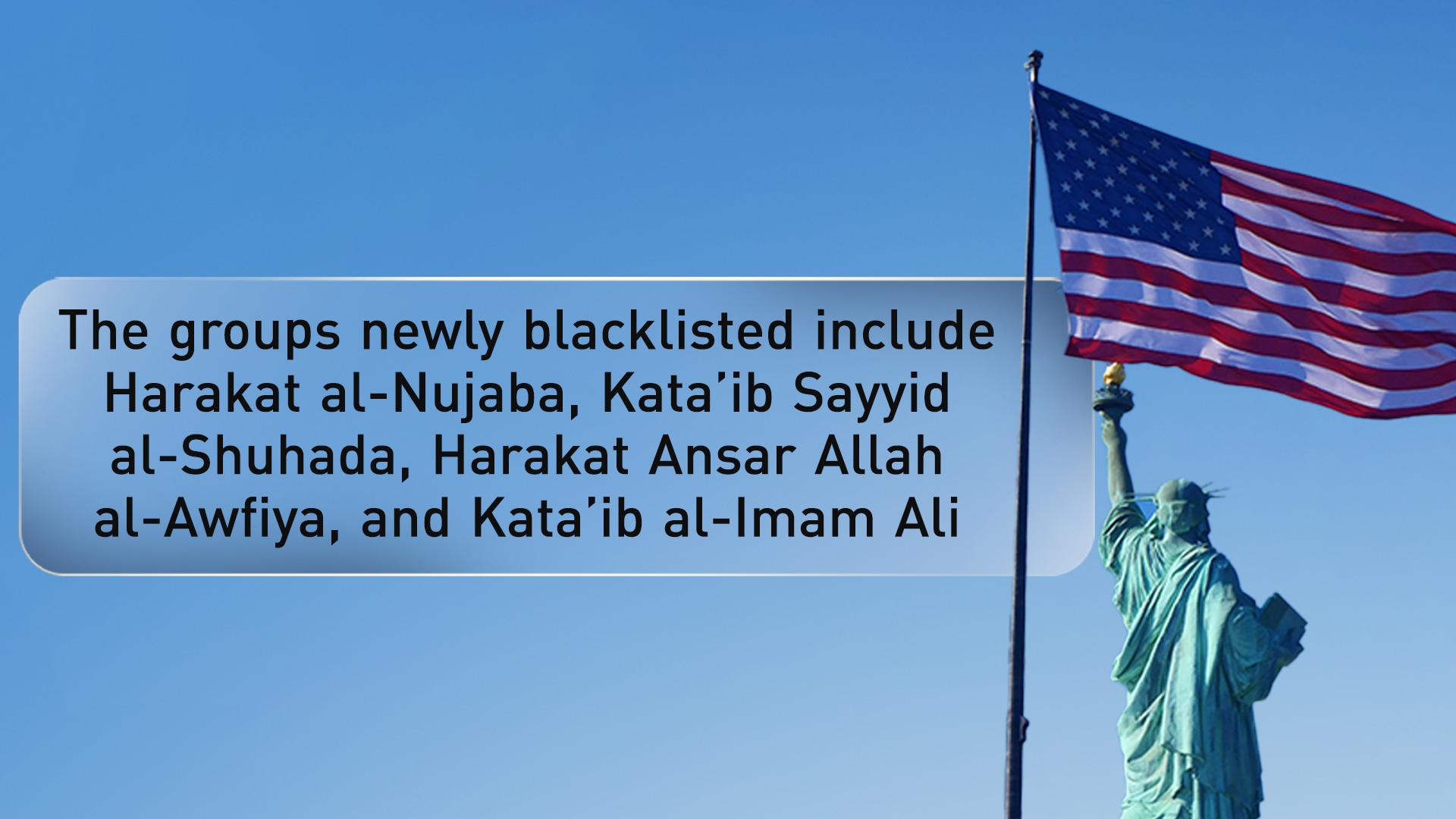US Designates Four Iran-Aligned Iraqi Militias as Foreign Terrorist Organizations
The groups newly blacklisted include Harakat al-Nujaba (HAN), Kata’ib Sayyid al-Shuhada (KSS), Harakat Ansar Allah al-Awfiya (HAAA), and Kata’ib al-Imam Ali (KIA).

ERBIL (Kurdistan24) – The US State Department on Wednesday announced the designation of four Iran-aligned Iraqi militias as Foreign Terrorist Organizations (FTOs), underscoring Washington’s continued efforts to counter Tehran’s influence in the Middle East and to protect American personnel and facilities from armed attacks.
The groups newly blacklisted include Harakat al-Nujaba (HAN), Kata’ib Sayyid al-Shuhada (KSS), Harakat Ansar Allah al-Awfiya (HAAA), and Kata’ib al-Imam Ali (KIA). Each of these militias has been accused of conducting or planning attacks against US and coalition forces in Iraq, Syria, and neighboring countries.
“The United States remains committed to countering Iran, the world’s leading state sponsor of terrorism, and disrupting Iran-aligned militia groups from conducting attacks against US personnel and facilities,” the State Department said in its statement.
The Groups Designated:
Harakat al-Nujaba (HAN): Established in 2013, HAN has pledged loyalty to Iran’s Supreme Leader Ayatollah Ali Khamenei and maintains close ties with Iran’s Islamic Revolutionary Guard Corps-Qods Force (IRGC-QF). The group, whose leader, Akram al-Kabi, was designated a Specially Designated Global Terrorist (SDGT) in 2019, has publicly threatened US bases and personnel in the region.
Kata’ib Sayyid al-Shuhada (KSS): Designated as an SDGT alongside its leader Hashim al-Saraji in 2023, KSS has been accused of threatening the US and the Global Coalition to Defeat ISIS forces. The group is backed by Iran through funding, weapons, and training.
Harakat Ansar Allah al-Awfiya (HAAA): The State Department linked HAAA to the deadly January 2024 drone attack on Tower 22 in Jordan, which killed three US service members. Its leader, Haydar al-Sa’idi, was sanctioned in 2024 for his role in orchestrating the attack.
Kata’ib al-Imam Ali (KIA): The militia has coordinated attacks on the US military, diplomatic facilities, and commercial projects in Iraq. Members have reportedly trained in Iran and Lebanon with Hezbollah. Its leader, Shibl al-Zaydi, previously sanctioned in 2018, was known to have worked closely with slain IRGC-QF commander Qasem Soleimani in financing operations.
Iran-aligned armed groups, often referred to collectively as the Islamic Resistance in Iraq, have intensified their attacks against US military and diplomatic interests since the 2020 killing of Soleimani in Baghdad. These militias are a key component of Iran’s so-called Axis of Resistance, which spans Iraq, Syria, Lebanon, and Yemen, and is seen by Washington as an extension of Iran’s destabilizing influence in the region.
The designations come amid heightened tensions between US forces and these militias, who have increasingly targeted American personnel in Iraq, Syria, and Jordan with drones, rockets, and improvised explosive devices (IEDs).
By formally classifying these groups as terrorist organizations, Washington aims to cut off their access to financial systems, freeze assets under US jurisdiction, and criminalize material support for their activities.